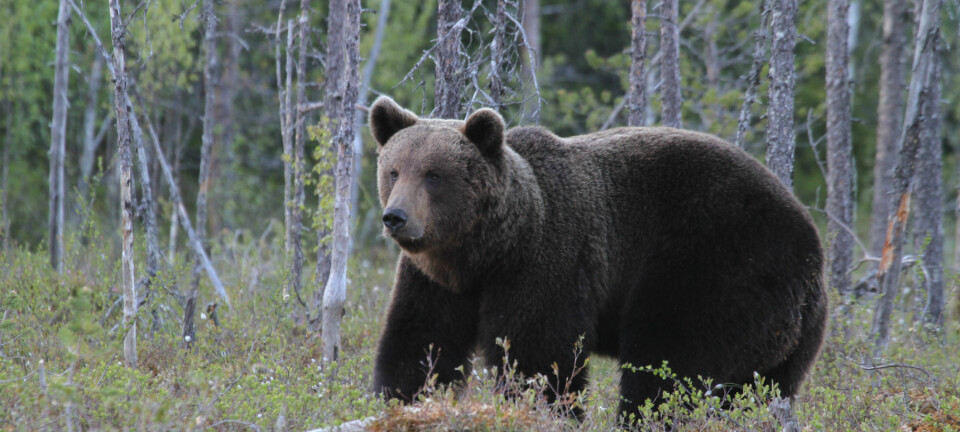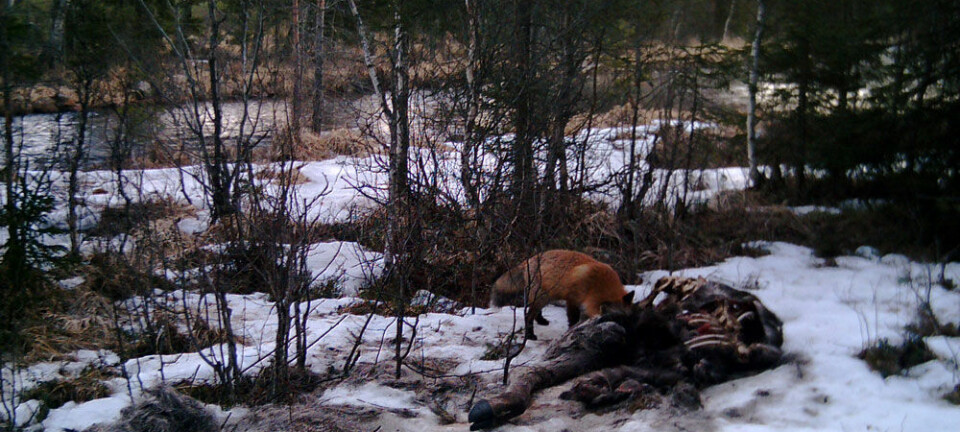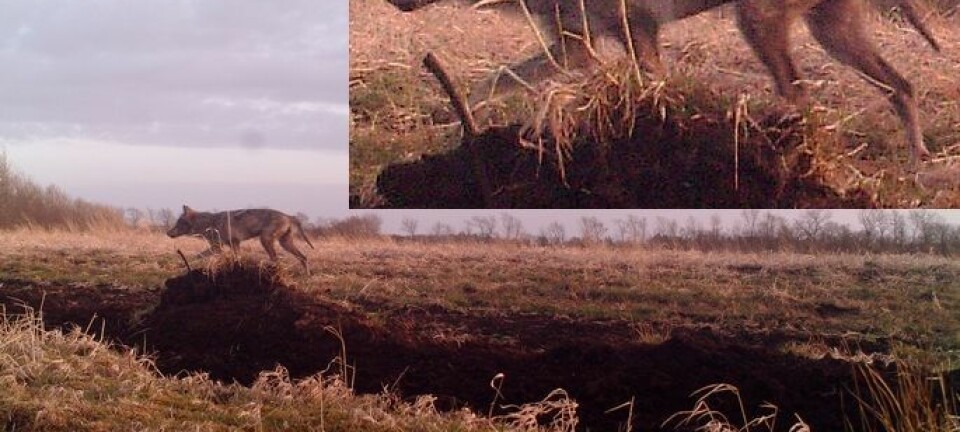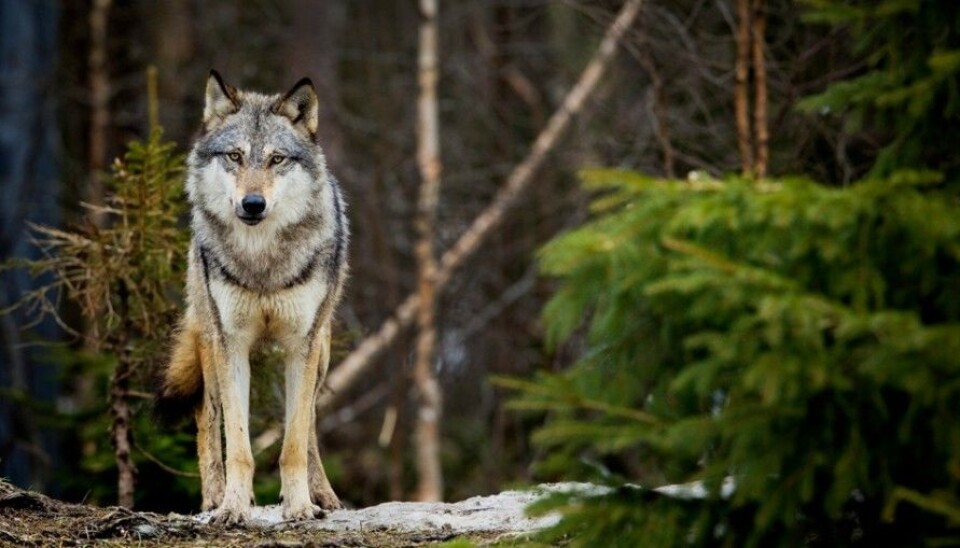
Wolves love and fear forest roads
In recent years we have become far more likely to encounter wolves on the Scandinavian Peninsula. A major reason is that Homo sapiens and Canis lupus lupus both like to get from point A to point B as quickly and effortlessly as possible.
Denne artikkelen er over ti år gammel og kan inneholde utdatert informasjon.
The forests of the Scandinavian Peninsula represent a major commercial resource. While logs were traditionally dragged out of icy forests by horses or tractors in the winter, heavier machinery has taken over the cutting and transport of timber. More roads, and wider ones, have been cut into the woods to accommodate the traffic.
Forest roads, often covered with gravel, also make it easier for the rest of us to reach out-of-the way forest lands.
This means that we are more likely to run into wolves. These logging access roads also have an impact on how wolves travel.
Researchers at Hedmark University College have carried out a project studying how wolves use such forest roads in summer.
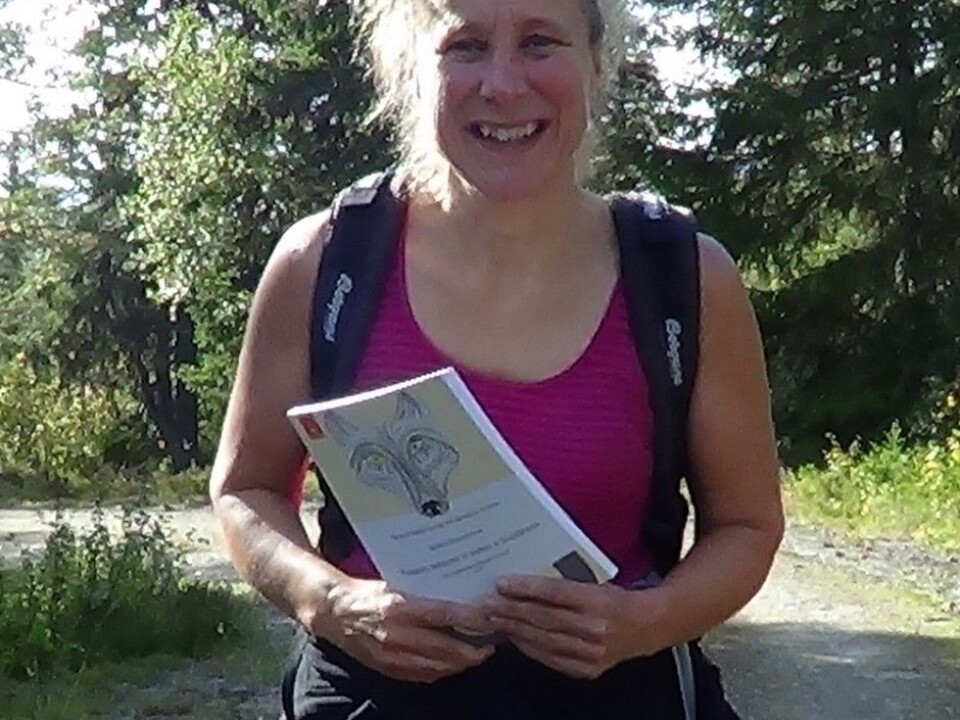
The study, part of the Scandinavian wolf research project Skandulv, was done with the help of GPS collars placed on individual animals.
Lots to do
A wolf couple has a busy schedule. They guard a territory of about 1000 square kilometres, which is the average parcel of a land per wolf pack in Scandinavia.
When a pack is marking its territory it’s an advantage to traverse the land as quickly as possible. Logging roads are easy to run on and perfect for wolves.
Researchers from the Evenstad Campus in Hedmark County found that roaming wolves maintain an average speed in the wooded terrain of about 2.15 km per hour. On a gravel road their average is nearly twice that.
Treacherous trail
Another reason why wolves like such roads is that their prey can often be found near them. Also, human hunters of moose, deer and other game butcher their catch and often leave the scraps along or near these roads.
A study shows that a female moose and its calf or calves, which are the most important prey for wolves, try to avoid gravel roads during the summer.
But wolves also have ambivalent attitudes toward logging roads. They know that dangers lurk along them. So they have developed methods of avoiding confrontations with humans and their deadly rifles.
Wolves are at constant risk of being the victims of legal hunting as well as being picked off by poachers. Scientists estimate that about half these Scandinavian wolves end up being killed by humans.
Night strollers
A wolf does not like to use forest roads in areas that are riddled with them, explains Barbara Zimmermann at the Hedmark University College’s Evenstad Campus.
“They prefer dirt or gravel roads that are far from other roads and infrequently used by humans. They also like to avoid areas with lots of houses. We don’t know whether they differentiate between houses that are still in use and ones that have been abandoned,” she says.
Anybody walking along a forest road in the daytime is highly unlikely to come across a wolf. The researcher says this is when wolves sleep. But they don’t lay down too close to a road. Still, they don’t sleep too far from roads because that would delay the next stage of their journey in the evening or when night falls.
Sharing responsibility
When a wolf has cubs it is even more cautious than usual. It will still use logging roads but not as often as otherwise.
During the initial weeks after the cubs are born, the male is the one who goes prowling. The female sticks around and watches the youngsters. After a few weeks, however, gender equality gets re-established in the family. The male and female take turns hunting food for the cubs.
“After four to six weeks in the den, the parents move the cubs to a new location. Often this will be a place near a carcass. The cubs stick around at such spots along with one of the adults. They stay there for two or three weeks before moving on. In this period the logging roads are important,” says the wolf researcher.
Dangerous crossing of borders
Wolves utilise forest roads for patrolling and territorial marking.
“They spend much of their time patrolling and marking their territory. They rarely stray cross one another’s borders. If they do, the result can be fatal,” says the wolf expert.
There used to be a lot of space between the territories, but with the passage of time the families have increased, from just two in the 1990s to 43 today. As a result, the territories have become more densely packed.
Living closer together
Politicians and wildlife authorities in Norway and Sweden have decided to keep wolves out of the areas where tame reindeer roam. This has created a northern border for wolves. The western border has been set at the Glomma River in Eastern Norway, because wolves are definitely unpopular and unwanted in the wilderness where sheep graze.
The southern border in Sweden is the E18 highway, which connects Oslo to Stockholm. The E18 is hard to cross and functions as a death trap for the animals.
“As a result, we automatically have a range limit or maximum territory of wolves in Scandinavia, even though the number of families is increasing,” says Zimmermann.
----------------------------------------
Read the Norwegian version of this article at forskning.no
Translated by: Glenn Ostling








